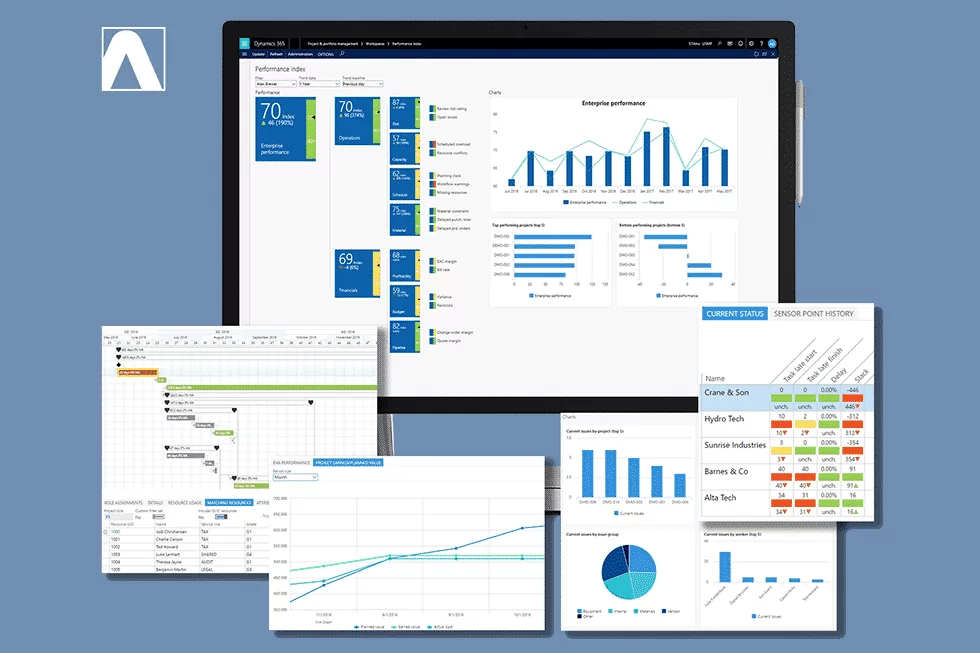It’s been a long time coming, but project-based companies are starting to take steps to changing how they run their business. For decades, project businesses have been operating in the same inefficient way, leading to stagnant productivity, poor business management, and overall poor performance.
There’s a growing trend toward a new approach in solutions for project businesses. Over 10 years ago, Adeaca created this vision of one integrated business system for project businesses and developed the first Project Business Automation (PBA) solution on the market. Now, we’re finally seeing PBA build momentum as a movement that can change the industry for the better, and we’re excited to see project businesses start to demand more from their tech vendors.
Transforming Project Businesses with PBA
PBA rejects the status quo of disparate applications and project silos in favor of one integrated business system. This system includes support for all project business processes (financials and accounting, management and operations, insight and analytics) and connects them seamlessly in real time.
Forrester’s Now Tech: Project Business Automation report establishes PBA as the next category of software solutions for project businesses and validates our original vision of one integrated solution.
Designed specifically for project businesses, PBA provides real-time data streams and KPIs that facilitate the acceleration and automation of business processes. This would not otherwise be possible when managed in separate applications.
Here are four main benefits of PBA:
- Eliminate Point Solutions and the Resources Required to Maintain Them
PBA consolidates all project business functions into one system, eliminating the need for multiple point solutions that project businesses typically employ. Standalone applications such as project management, portfolio management, estimating software, and most of all spreadsheets, can be eliminated. In addition, ERP and accounting systems are also fully integrated into PBA as well. This approach not only reduces the cost associated with these other applications, but it also creates massive efficiencies by eliminating the need to manually manipulate and reconcile data between these systems.
- Eliminate Data Management Requirements
Project businesses typically employ many resources to export, import, translate, consolidate and manipulate data from multiple systems and applications. In a fragmented environment, it’s the only way to produce intelligence in the form of metrics and reports for managers and executives. PBA eliminates these data management and report producing requirements. By automating data workflows and creating one source of truth for the entire company, all project business metrics can be generated instantly in real time. This allows data management resources to be redeployed where they can produce value for the company.
- Reduce Risk with Early Detection
Managing projects are full of risk. It’s not just what you know, but when you know it that really matters. Oftentimes, executives and managers do not have a way to instantly recognize changing conditions and risks. This means many issues go unnoticed until they grow and become bigger problems. As shocking as it is, we’ve heard that managers don’t know if a project is successful and profitable until the project is complete. That could be 30 to 90 days after the project is done. PBA tracks financial and operational events in real time, flagging any deviations and trends. This allows project businesses to have visibility into any potential problem areas before they become major risks. PBA provides a level of monitoring that not only increases agility, but improves decision making and increases the likelihood of success.
- Produce Better Project Outcomes
PBA is all about making project businesses more effective by ensuring projects are delivered on time and within budget. By bringing all business processes into one comprehensive system, PBA provides massive gains in efficiency and insight, resulting in better outcomes for their customers, and ultimately leading to increased profitability.
Download the Project Business Automation Blueprint to learn how PBA creates a streamlined, comprehensive system for project-based companies.
What Makes Adeaca PBA Stand Out Among the Rest
There are many applications that address specific business areas, whether that’s ERP functionality, such as HR, supply chain, customer management, or project-driven processes such as financials and accounting, management and operations, sales and proposals, insight and analytics. However, PBA is the only system that provides instant connections across all business areas. Don’t waste time and resources purchasing individual applications for specific tasks when you can do it all in one end-to-end solution that is purpose-built for the project-driven enterprise.











